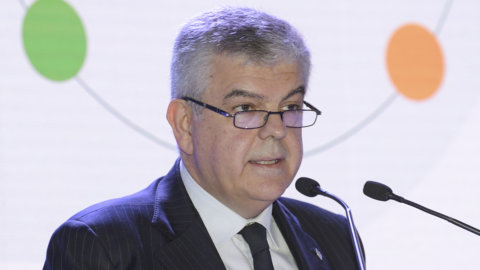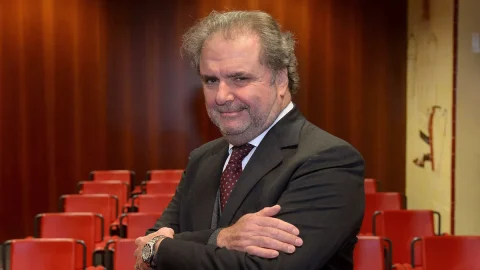With over 82 employees, more than 10 trains every day (about 8 in Italy and over 2 abroad), 1 billion annual presences on trains and buses and 45 million tons of goods per year, the FS Group, led by the CEO Luigi Ferraris, is one of the major Italian industrial companies, leader in the transport of passengers and goods by rail. Led by the Ferrovie dello Stato Italiane Spa holding, the parent company is 100% owned by the Ministry of Economy and Finance and controls the operating companies in the four sectors of the supply chain: transportation (Trenitalia, Mercitalia Logistic, Busitalia sita Nord, Ferrovie del Sud Est and car services), infrastructure (RFI, Italferr, Anas) services real estate (Major Real Estate Stations and Urban FS Systems) e others services (Ferservizi, Fercredit, Italcertifer, Nugo and FSTechnology).
Those of the new are important numbers Business plan 2022-2031 and which mark the group's course for the next 10 years. A new long-term strategic and organizational vision, aimed above all at accelerating the assets front investments, on the digitization sustainability not forgetting the people. But the new FS plan also looks beyond the border, with the Group intending to position itself as a "multidomestic company" in Europe.
What will the investments be?
The new industrial plan of FS Italiane envisages total investments for the whole country of over 190 billion and an impact on the national economy estimated at 2-3 percentage points of GDP, with the aim of transforming transport into a integrated system under the banner of sustainability and digitisation. A lot of money which, thanks also to the support of a very large share of the Pnrr, will be divided as follows:
-a RFI 110 billion euro: which manages 16.800 km (1.670 tunnels, 23 bridges and viaducts, 2.200 stations), of which approximately 700 km of network (1.400 km of tracks) are dedicated to high-speed services;
- For Anas 50 billion euro: which manages a road network of approximately 32 kilometers (2.000 tunnels, 18 bridges and viaducts, 1.200 roadmen's houses);
- the remaining share for the fleet (15 billion only for trains and 4.660 buses, 763 of which are hybrids) services railway (46 HS trains, 34 intercity trains, 495 regional trains) e digitization in line with market needs.
Speaking of innovation and connectivity, the Group intends to install wifi on all 17 kilometers of the railway network and in the 2.000 railway stations in the area. A platform is also planned for smart mobility, another for smart timetable that will interact with the passenger, and one for group payments.
To double the share of goods handled in 2019 and reach the target by 2031, a series of measures are envisaged from a system perspective for a total of almost 2,5 billion investments. The construction of new intermodal railway freight terminals, technologically advanced and with low environmental impact, will be able to increase the volumes of goods, also in intermodal transport.
In light of the conflict in Ukraine and the critical issues related to energy supply, FS bets on the green. The goal is to produce 40% of energy, given that the group is the first consumer in Italy with 6 Terawatt/hour or 2% of total demand. There is a lot of unused space to be exploited for the core business and which can be converted for solar plants, small wind turbines and even do some energy storage in times when there is a surplus.
Furthermore, we must not forget the role of the new lines that FS is working on, such as the Third Pass of the Giovi: the southern end of the Rhine-Alps corridor which will be able to transform the Genoa junction into the main hub along the trade route from the Far East to Europe, shortening sea transport times by about 5 days of navigation compared to the ports of the North Sea such as Rotterdam and Antwerp. Then there is the renewal of the fleet of locomotives and wagons, with the replacement of 3.400 vehicles and the entry of over 3.600 new generation vehicles, with a lower environmental impact, electric and hybrid.
Among the objectives there are also the integrated management of parking lots which will go from 84 to 250, thus managing 20 more parking spaces, thousands of columns for electric cars and new spaces for sharing; the development of centers of excellence to offer turnkey, turnkey services to medium-sized cities – those with between 100 and 400 inhabitants – to design, build, finance and manage infrastructure for sustainable urban mobility.
What are the travel times?
The works will result in a reduction of travel times on the main railway routes. For example: Turin-Genoa (from 1h and 40' up to about 1h); Milan-Genoa (from 1h and 30' to about 1h); Milan-Trieste (from 4h and 20' to 3h and 50'); Naples-Bari (from 3h and 35' to 2h); Palermo-Catania (from 3h to 2h); Sassari-Cagliari (from 3h to 2h and 30'). Furthermore, the construction of the Florence railway underpass will contribute to reducing travel times on the Turin–Salerno AV backbone and to a total separation of the High Speed and Regional flows in the Florence junction, with an improvement in regularity and a strengthening of the offer of the latter.
Focus on Sicily (20 billion) and Calabria (16 billion)
Great attention is paid to reducing inequalities between north and south. For Sicily alone, more than 20 billion euros of investment are planned. In terms of infrastructure, the main projects will concern the territories of Palermo, SIRACUSA, Catania e Messina. On the other hand, the resources earmarked for road infrastructures amount to 5,78 billion euros: among the main interventions, the Ragusa-Catania connection, the SS 121 section of Palermo-Bolognetta roundabout, the SS 626 for the completion of the Gela ring road, the SS 284 Adrano- Paternal.
But also regeneration interventions and intermodality and logistics solutions in urban areas, for approximately 2 and a half million square meters of areas to be enhanced with investments of 3,7 million in assets. Instead, the investment in the island will be 860 million for the extraordinary maintenance of the compendiums of Catania Acquicella (360 million) and Catania Bicocca (500 million).
There are 16,689 billion euros of investments planned for the next decade in Calabria. The funds attributed to infrastructures constitute the main part: 15,28 billion euros, of which 8,8 billion concern railway infrastructures and will mostly be destined for the construction of high-speed trains Salerno-Reggio Calabria, to the enhancement and electrification of the ion line and the backbone Lamezia-Catanzaro Lido and connections with the port of Gioia Tauro. 6,48 billion euros the tranche destined for road infrastructures.
On the other hand, 309 million euros are earmarked for passengers which will translate into 29 new trains and new services, including the improvement of the metropolitan service in the Reggio Calabria and the speeding up of Intercity trains on the Ionian line, between Reggio Calabria and Taranto. For the "urban hub", in Calabria an estimated 600 thousand square meters of areas to be developed, for a value of 1,1 billion euros; the main projects concern the territories of Reggio Calabria, Cosenza and Montebello Ionico. For logistics, on the other hand, an expansion and development of new connections is planned. Intermodal services (linked to the ferry in the Strait of Messina) go from around 1,3 million euros in 2022 to around 4,1 million in 2031, equivalent to around 276 trains a year. Conventional services will grow from 1 million euros in the current year to 1,5 million in 2031.
Fs abroad: France, UK, Germany, Greece, Holland and Spain
In France, in December 2021 the offer of high-speed services between Milan and Paris via Turin and Lyon was launched and also enhanced with connections between Paris and Lyon.
In UK with Trenitalia c2c – controlled by Trenitalia UK – Fs has strengthened its presence thanks to the assignment of the concession to manage one of the most important railway lines, the London-Glasgow, to which services will be added on the new high-speed line (High Speed 2 ) which will connect London with Birmingham and Manchester. In Germany and Czech Republic with Netinera. In Greece where faster connections have been activated between Athens and Thessaloniki and services have been developed in favor of passengers and intermodality.
In Spain, where the Frecciarossa 1000 will travel between the main cities of the country by the end of 2022 and in the Netherlands, thanks to Qbuzz, the road operator in local public transport which is developing important solutions to promote more sustainable transport with its own fleet of hydrogen.
Financial projections: growing revenues and ebitda
Even the financial forecasts for 2031 are not lacking in ambition. From 12 billion euros in revenues in 2022, it is expected to reach 18,1 billion in 2025 and 22,5 billion in 2031. Ebitda is also on the rise to 3,9, 6,9 billion, with average annual growth (CAGR) over the plan period of 8,2% and XNUMX% respectively.





